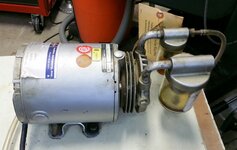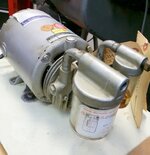Rockytime
Member
I have blanks that need stabilizing. I can come up with a vacuum chamber but it is the pump I am wondering about. A friend gave me a Gast 1/6 HP vacuum pump. The model number is 0211. It is not oil less and I wonder if that is a problem. Also, I cannot decipher the performance charts I find on line. Most small pumps are rated in cfm. 2 cfm, 3 or 4 cfm. For this pump the specs are in psig. I don't know how to understand them. My question is, will this pump perform satisfactorily?


